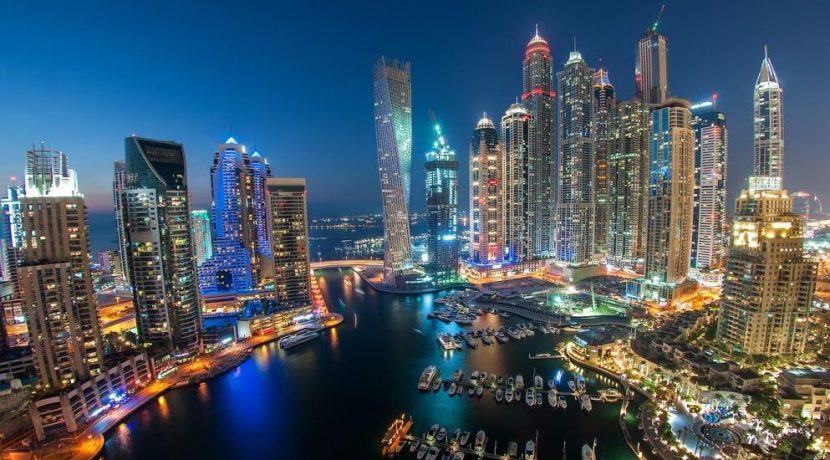New and prime commercial properties in nearby clusters pile on the pressure
Dubai: The upscale office towers on Shaikh Zayed Road are facing intense rental pressures — from the new commercial properties coming just up — and off — Dubai’s main highway. So much so, the older offices have seen average rental declines of 6 per cent from the new Grade A supply in Dubai Trade Centre District (DTCD) and Dubai Design District (D3).
DTCD has already made a mark as the address for blue-chip multinationals, while D3 — with new phases coming through — is finding favour with local and regional businesses in verticals such as fashion, accessories and the like, according to the latest Dubai office market update from Core UAE, the property services firm associated with UK’s Savills.
These spaces are telling on demand for offices in Downtown and the older set of towers on SZ Road. But another nearby cluster — the more competitively priced units in Business Bay — is also adding to the pressure.
“Both DTCD and D3 offer Dubai Economic Department (DED) and free zone ownership formats within the developments and witnessing robust absorption, paving the way for future phase deliveries,” states the Core report. “Interestingly, D3 exhibited an exponential rise of around 70 per cent in rents, largely due to its attractive lower initial base rents and high phase 1 occupancies.”
Among the city’s established office locations, Tecom recorded the highest rise in rents — by 10 per cent. These are backed up by 90 per cent plus occupancy rates; even then, “We see a strong demand, especially from existing technology and media occupiers looking to expand, not being met due to constraints in supply,” the report adds.
Sluggish activity levels
“The only new supply coming to the market — The Edge — was almost entirely pre-leased by Oracle.
Although landlords in Tecom are becoming more flexible, this gap in supply is expected to bolster their negotiation capabilities.” (Interestingly, Barsha Heights (formerly Tecom C) experienced sluggish activity levels and saw its rent drop by 7 per cent, according to the report.) Rental gains — though by a more sedate 2 per cent — were also made by Dubai Healthcare City, helped along by sustained demand from health care and pharma-based entities over the last two quarters.
Also managing to sustain their tenancy levels were the traditional commercial areas in Bur Dubai and Karama. The ageing stock and smaller office formats have not diluted the charms of these locations, at least among a certain class of tenants.
“We see both these locations witnessing rental rises facilitated by steady demand from its captive market,” Core report notes. “However, Deira at 4 per cent rise in rents, lagged marginally from Bur Dubai’s 5 per cent rise. Moreover, we also saw newer buildings in Garhoud achieving higher rents and absorption when compared with Bur Dubai and Deira.”
But in Business Bay, there is a marginal softening in rentals, by 3 per cent, while occupancy levels are at “just 60 per cent, the lowest among all office submarkets”. It could be that Business Bay is yet to find the right balance between the new supply getting delivered — and adding to the existing stock — and tapping demand from potential tenants.
Absorption levels
According to David Godchaux, CEO of Core UAE, “We see buildings located in the interior of Business Bay facing decreased space take-up compared to the buildings near Shaikh Zayed Road as a gap in infrastructure and access is yet to be resolved. However, we expect absorption levels to moderately go up as the development nears completion along with assistance from the burgeoning demand from start-ups.”
But the cluster where rentals are feeling the downward pressure the most is JLT [Jumeirah Lake Towers] with rents down by 10 per cent, Core states. “The submarket largely consists of strata owned Grade B stock,” it added.
“New deliveries, such as the Mazaya Business Avenue, add to the existing oversupply while offering entry points as low as Dh60 a square foot, further lowering the market average.”
But “Grade A properties such as Almas Tower and One JLT, which command almost 60 per cent higher rentals than JLT’s market average, have maintained relatively steady rentals in this [second] quarter.”
Factbox: A snapshot of future Dubai office supply and sales performance
• Around 7.3 million square feet of new supply is expected to come online by 2018, with Business Bay accounting for about 30 per cent of this.
• Apart from some strategic purchases by banks of their office headquarters, very little sales activity is taking place involving office property in Dubai. Business Bay, Tecom C and JLT saw “higher year-on-year decline at 9, 13 and 16 per cent respectively, indicating a declining investor interest in favour of more established locations,” Core reports. “DIFC [3 per cent decline year-on-year] retained its position as a top performing location as strong investor demand persists for quality Grade A commercial product that is well managed, with sufficient parking and lifts, large floor plates and high-profile tenants.”
• At the Downtown, “cash-rich landlords are not pressed to sell in a bottoming market”.
• An immediate revival in sales prices in the near term looks unlikely, though yield levels have improved “as rental drops have not echoed the sale price drop to the same extent”.
All rights reserved to the initial publisher for gulfnews.com
Collected and published by Arms &McGregor International Realty® editorial team. Get in touched with us at [email protected]

